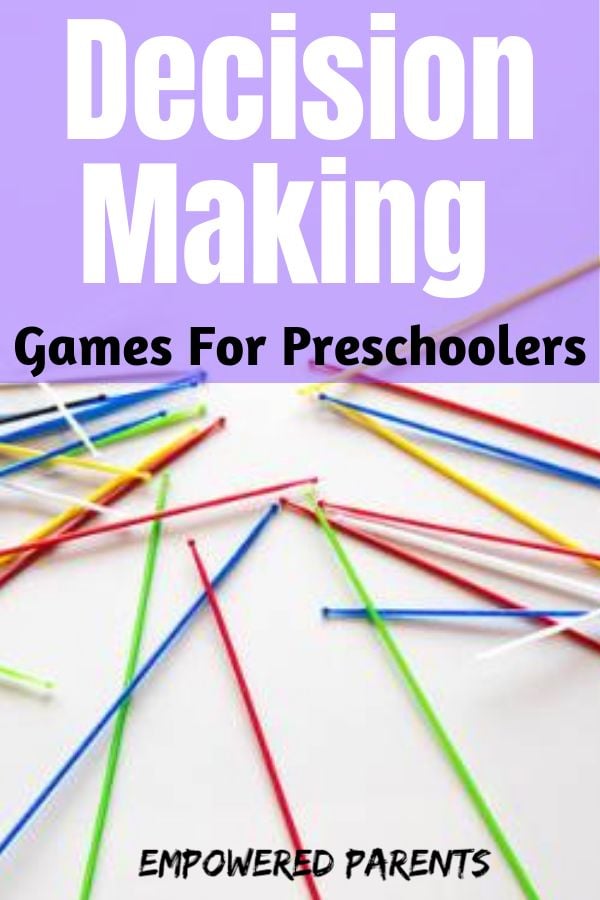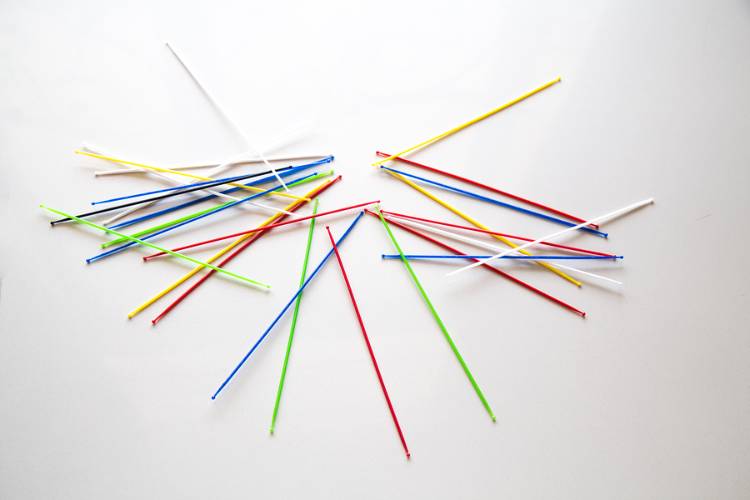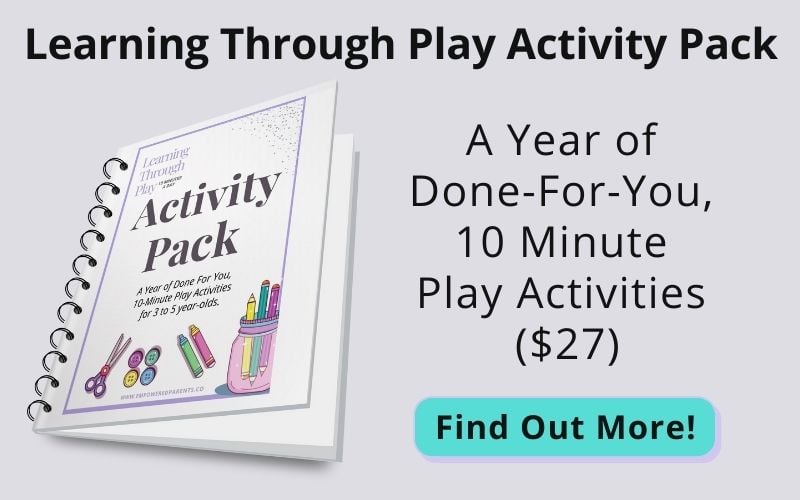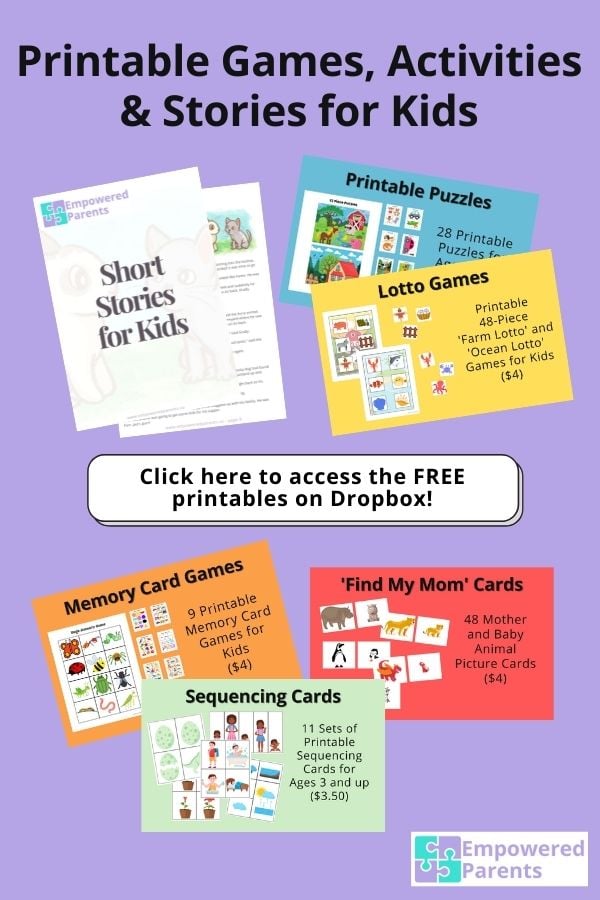Decision Making in a Group Funny

Being able to make a choice is a vital life skill that children carry into adulthood. We are presented with hundreds of choices on a daily basis, from tiny ones – such as manoeuvering through traffic – to big ones – such as career moves.
While doing some research to put this article together, I was surprised to see so few articles about decision-making games for students in kindergarten or preschool. Most were aimed at adults in the workplace, to try and teach them to make choices.
I always write about developing skills – such as creativity, problem solving and critical thinking – as early on in life as possible, as they are learned effortlessly during the first 6 years, but with greater difficulty later on.
Decision making is no different – teach your young child this skill and she will have it developed long before she enters the workplace.

With small children, it starts with choosing what to wear, what to play with, what to eat, etc.
With time, they learn not only to think carefully about something but also to make on-the-spot decisions when necessary.
They also start making a connection between their choices and the consequences of them, which leads to being responsible and accountable.
Introduce young children to decision making in two ways:
1. Provide opportunities for them to make decisions, such as playing board games where they need to think quickly throughout to stay in the game and try to win.
2. Discuss the skill of making decisions and teach your children to make considered choices.
For example, offer a choice to have a swimming party or an indoor climbing party for a birthday. Make lists of pros and cons, talk about how to decide, which one you think will be more fun and suggest a time frame for making the choice (e.g. a day or two instead of immediately).
Even when choosing what to wear for school, ask your child to consider the weather, what activities he would like to engage in (such as playing in the sandpit or water), etc.
Teach your child the words to use to make these choices, by using them yourself when you talk about it. You will be extending his vocabulary as well as his ability to think things through carefully. Here are some example words:
- Choose
- Decide
- Careful
- Rather
- Prefer
- Better
- Consequence
- Why
- Pros
- Cons
- Which
Here are some simple games to teach decision making and ways to provide an opportunity to talk about making decisions and accepting the consequences.
They will also d evelop your child's cognitive skills.
Watch this video with a list of the activities to help make decisions, or read them below.
This post contains affiliate links for educational products that I personally recommend. If you purchase through one of them, I earn a commission at no extra cost to you. Read the terms and conditions for more details.
1. Musical Chairs
Musical chairs is one of the best games for teaching fast, on-the-spot decisions.
The game is simple:
- You'll need some siblings or friends to play with
- Start the game with enough chairs for everyone to sit and place them randomly around the room
- When the music plays everyone dances around the room
- When the music stops everyone must run and sit on any of the chairs
- Remove a chair and start the music again
- Stop the music and whoever doesn't get to a chair in time is out.
- Continue, removing a chair in each round until there is only one child left
This is a game of thinking fast because if you don't decide on a chair and move to it quickly you will lose. With practice, children learn how to choose a chair.
Is the best one the nearest one? The one with the least amount of people around it? Facing you or facing away?
2. Tic Tac Toe
Tic Tac Toe, also called naughts and crosses, is one of the simplest yet best games for practising decision making. Not only do you need to choose squares that will help you get a row of three, but you also need to choose squares to stop your partner from potentially getting three in a row.
It takes a lot of concentration and practice to get good at this game and it can be tough at first for young children but they will soon catch on and start outsmarting you.

Here are the rules of the game:
- Draw the outline (as in the pic above)
- Assign a symbol to each player (one player is naughts , one is crosses )
- Taking turns, place your mark (0 or X) in an open square
- To win the game, you must make a row (horizontal, vertical or diagonal) with your symbol
This game can be played on a chalkboard, whiteboard, paper or a Tic Tac Toe board.
3. Ant or Elephant
Show your child a picture of an ant and a picture of an elephant. Play the game by asking, "Would you rather be an ant or an elephant?" Your child has to pick an answer and explain why.
This is a great decision-making activity for kids that will also build their thinking and reasoning skills.
You can use any kind of animal, person or quality as an example.
Keep a box with picture cards in and play it regularly. You can also ask your child to make up her own.
Here are some more examples:
- Would you rather be tall or smart?
- Would you rather be a doctor or a builder?
- Would you rather be a fox or a tortoise?
Here are 100 Fun Would You Rather questions for kids.
4. Hide and Seek

One of the most traditional and played games of all time, hide-and-seek can be a great decision-making game.
Add a new rule that you cannot hide in the same place twice and your children will have to continuously be thinking of new places to hide. The wrong choice will result in them being found too easily!
5. How the Story Goes
This game can be part of your evening bedtime story routine. Choose a story your child hasn't heard before and read the first few pages. Then offer two alternative paths:
- Bear decided to go for a walk in the woods.
- Bear decided to have a picnic with his friends.
Ask your child to choose which path she likes more and to tell the rest of the story by using her imagination.
Or, offer two alternate endings:
- The girl married the prince.
- The girl didn't want to marry the prince.
Tell the story to get to the ending.
6. Pick Up Sticks

Pick up sticks is an old favourite. You can use a set of wooden pick up sticks, skewer sticks, straws or even twigs from the garden.
It requires making a very careful decision about which stick to move each time. Making the wrong decision will result in losing a turn.
This is how you play the game:
- Hold the sticks upright in your fist on a table or floor
- Let go and let the sticks fall wherever they land
- Take turns removing one stick from the pile at a time, without moving any other sticks
- Sticks that are lying on the surface and not touching others are easy to remove but sticks that are touching others must be carefully lifted with your hands or by using another stick
- If you move another stick while trying to lift one, you have to leave your stick on the pile and let the other player have a turn
- The winner is the person with the most sticks at the end
During this game, children learn to recognize which sticks are too lodged in to be moved easily and how moving a stick will affect the others around it. It requires lots of practice and will also develop your child's fine motor skills and concentration span.
7. Dominoes
This game is simple enough for preschoolers to play and requires them to decide which pieces to play each time it is their turn. They have to consider which piece is suitable and which to choose if they have more than one option in a turn.
Here is a video with the rules of dominoes for a refresher.
Here's a great set of dominoes for kids.
8. Memory Game
A memory game can be played with a set of picture cards (with exact pairs). This is how you play:
- Turn all the cards face down on the table
- Take turns choosing two cards each and turn them face up
- If the cards match, you keep them
- If they don't match, you turn them both face down
- Continue turning two at a time until all the cards have been matched
- The winner is the person with the most cards at the end

In a memory game, children have to try and remember where the pictures are on the table. This works their memory and concentration skills.
They also need to make wise choices. For example, if a child only knows where one of the apples is and starts by turning it over, then she has a slim chance of picking the matching apple with a random card.
However, if she starts with a card she doesn't know, it may reveal a picture she has seen on another card she remembers the location of.
Also, if she more-or-less knows the location of a few pairs, she should start with the pair she is most sure of and work her way through them. These are decision-making skills she will pick up naturally with time and practice.
You can find a printable set of memory card games in the downloadable printables at the end of the post.
Here are some ideas for games to improve memory and more fun matching activities.
9. Stuck on a Deserted Island
Play this game by asking your child:
If you were stuck on a deserted island and you could only take three things with you, what would they be?
This game is more suitable for older preschoolers. Question your child about her choices to make her think them through carefully and give her the option to change her mind until she has settled on three things she cannot live without.
Here are some examples:
- You'll have lots of fun with your three toys but what will you eat and do you have any way to prepare food?
- Do you think you will find spare batteries for that on the island?
- Is there a place to charge it or plug it in?
- Where will you sleep?
- Have you taken anything that will help you survive? Or can you use things in nature to help yo u?
10. Role Play
Your kids will love this game and will probably keep going all day. Make sure to never break character! You will be giggling a lot.
11. Checkers
Board games like checkers or chess are excellent because every single move must be thought out and decided on, as opposed to a game that relies a lot on chance (such as a throw of a dice).
Chess might be too difficult for preschoolers – although not for some – but draughts is a much more basic game to teach, that still requires a lot of thinking. It can be a fun activity to make this game as an art activity and colour in or stick the squares.
Improvise and use natural materials, buttons, coins or counters.
This large checkers game can be played outdoors and has a Tic Tac Toe board on the reverse side.
12. Monopoly
Monopoly is a fun game to play as a family. Start with Monopoly Junior but later teach your children to play the adult game when they are ready.
This game requires a lot of strategic thinking and making decisions about buying and selling investments.
This is a great game to get engrossed and spend lots of time together.
13. What's for Dinner?

Need some inspiration or ideas? Ask your child to go into the kitchen and choose one item that will be the main ingredient for tonight's dinner.
She needs to choose something that can be turned into a meal (not a spice or condiment) and she needs to give you ideas of what to cook with it.
Butternut, for example, could be used to make butternut soup, fritters or salad.
For some extra learning opportunities while you're at it – make sure you cook it together!
14. Build Me a…
For this activity use Lego or blocks and challenge your child to build you an interesting structure, choosing between two options. Some ideas:
- Build me an airport or a zoo
- Build me a parking lot or a castle
- Build me a tall tower or a cottage
There you have it. I hope you'll enjoy trying these simple yet fun decision-making games for kids.
Get instant access to FREE educational printables here. You'll receive puzzles, sequencing cards, 'find my mom' cards, memory games, lotto games and a pack of short stories.
Would you like a year of done-for-you, ten-minute activities to teach your 3-5-year-old through play? Get your copy of the Learning Through Play Activity Pack for only $27.

christoffersocort1957.blogspot.com
Source: https://empoweredparents.co/decision-making-games/


0 Response to "Decision Making in a Group Funny"
Postar um comentário